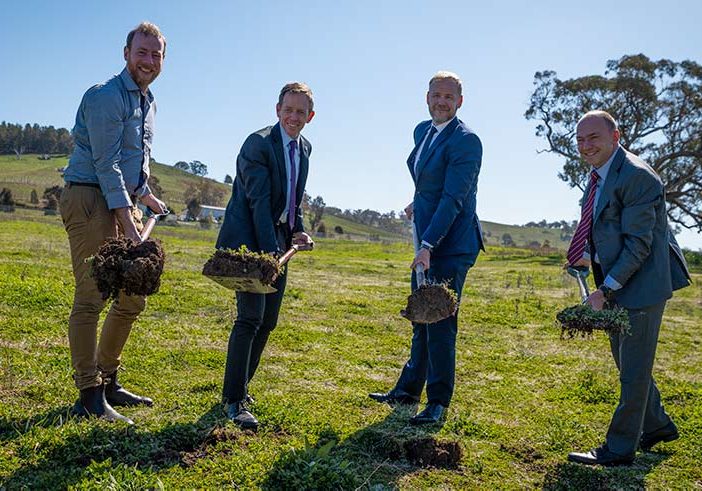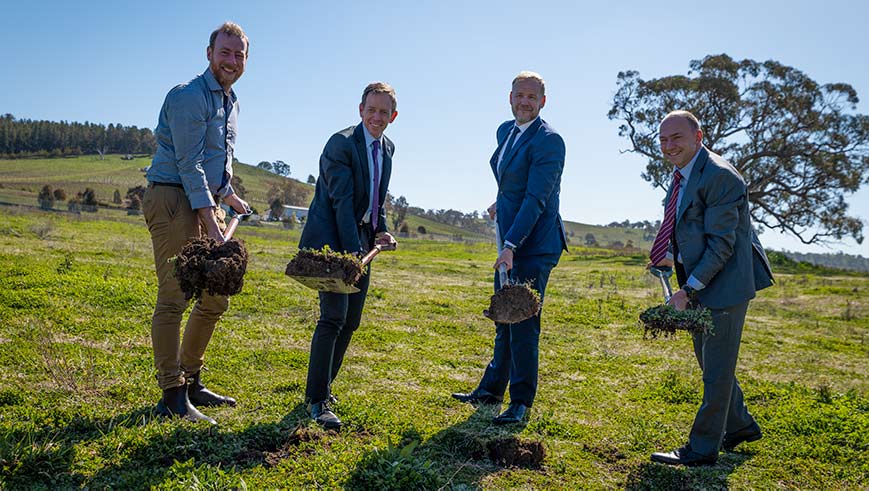
Construction has commenced at one of Australia’s largest community-owned solar farms, with the first sod turned at the 1MW SolarShare project in Canberra.
The commencement of construction is a milestone that has been a long time in the works, with SolarShare first initiating its efforts to establish a community-owned solar farm in Canberra back in 2011.
SolarShare hopes to be able to replicate the community ownership model, with the Majura project to serve as a key proof-of-concept that could enable the creation of additional community energy projects in other parts of Australia.
“The Majura farm is our flagship project,” SolarShare chair Nick Fejer said. “So we are immensely proud of reaching this milestone. Our climate is changing, as is our community, and we all have an important role to play in creating sustainable energy.”
SolarShare said that it hoped the community ownership model would provide a pathway to ownership of solar power for community members who may be prevented from directly investing in their own solar systems, such as renters or those living in apartments.
“SolarShare is for anyone who wants to be part of the shift to a renewable energy economy. This includes people who previously had no access to solar power market such as renters or those without a roof suitable for solar panels,” Fejer added.
Construction was kick-started by ACT climate change and sustainability minister Shane Rattenbury, with the project to be co-owned by around 500 local community members, and will produce enough power to supply around 250 Canberra homes.
“Putting solar power in the control of our community allows more Canberrans than ever to reap the rewards of solar energy,” Rattenbury said.
“Renters and people who live in apartments have had difficulties in the past seeing the benefits of solar power in the same way that homeowners have. Our new community-owned solar farm is a great way for them to feel the same support.
“The Solarshare farm offers further benefits to the Canberra community, with Solarshare Canberra collaborating with and providing internships to students from the University of Canberra, CIT and both the Fenner School of Environment and Society and Engineering Research School at the ANU.”
The 1MW project is being constructed in the Majura Valley, to the north-east of Canberra, and will be situated close by to the existing 2.3MW Majura solar farm. Epho Commercial solar has been engaged by SolarShare to construct the project, with first generation expected before the end of the year.
“We needed a partner who understood the complexity of the project and would work with us through the challenges of a community solar farm,” SolarShare’s principal executive officer Lawrence McIntosh said.
“Epho had been supporting our efforts for a couple of years, so the Epho Team was the most compelling choice of solar company in terms of costs, results, and risks for the execution phase of our solar farm.”
The SolarShare project will benefit from a 20-year power purchase agreement signed with the ACT government, with the project to contribute to the territory’s commitment to purchasing 100 per cent of its power from wind and solar.
The project has been developed using a co-ownership model, with shares in the project sold to members of the local Canberra-region. Shareholders were able to purchase a share in the project, with a minimum $500 investment, with a successful investment round completed last year.
The project will deliver financial returns to co-owners, through dividends paid from the revenues received by the solar project, and has received financing support from CWP Renewables, which stepped in to fill a funding gap.
“CWP Renewables feel privileged in assisting SolarShare’s journey through project financing. We were able to fill a gap that was difficult for commercial banks to fund but was possible for CWP because of our industry expertise and commitment to the ACT,” CWP Renewables CEO Jason Willoughby said.
The project expects to deliver around $400,000 back to community investors each year, with more than 2,200MWh of electricity expected to be produced and a saving of more than 1,800 tonnes of carbon emission annually.




